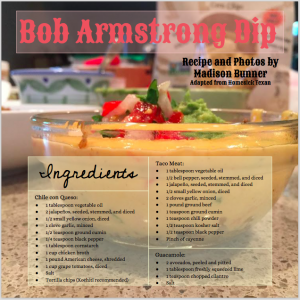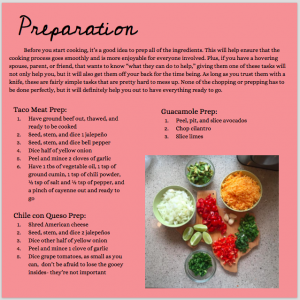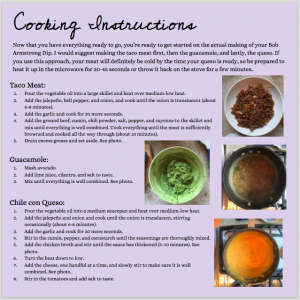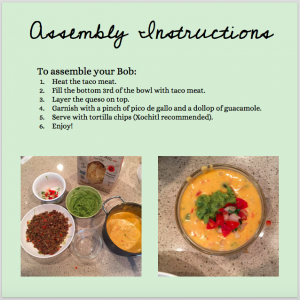Over the course of the semester, my ideas about the rhetoric of food have changed a lot. At the beginning of the class, recipes and restaurant reviews were the only genres of food related texts that I could think of off the top of my head. Now that the semester is over, I understand that food writing can come in all different varieties. I was really inspired by my classmates when I saw their creativity in producing their own texts. The way authors choose to express their thoughts, opinions, and research in relation to food can be so different from person to person. Food is such a common and powerful experience that everyone on the planet can relate to. It has the ability to define cultures, time periods, geography, politics, religion, and so much more. Eating food makes us feel something that we often don’t think or care to describe. Authors who are able to capture this experience and put it into words that give us that same feeling, whether it be identity, unity, or simply the happiness of a full belly, are artists. The rhetoric of food is writing that describes something we can’t see or feel, but we still know what it is. We can taste it.
Author: mkb2552
Favorite Readings | Fall 2016
This semester, we were exposed to a wide variety of food-related texts. My favorite of these texts was “Consider the Lobster,” by David Foster Wallace. This piece was so interesting to me because it conveys a very specific message about the food industry without ever expressing it in so many words. Wallace’s perspective on the Maine Lobster Festival is probably not one that you’ve heard before and the text could be really eye opening. This text helped me realize that food writing can come in all kinds of varieties and is often meant to invoke an extremely personal response within all of us, kind of like eating.
We were also prompted to go out into the world, conduct research, and find our own texts to read and share. My favorite text that I found was a gastronomical article entitled “Michelin in America,” by Priscilla Ferguson. I loved this text because I learned so much from it. Prior to reading, I had no idea what Michelin stars meant (except that they were good) or where they came from, and through this text I learned a great deal about their origin and the transformation of their usage over the years. I had no idea that Michelin came to America such a short time ago and was really interested to understand the dynamic that it now plays in our country’s food society.
A Closer Look at Restaurant Reviews
Follow this link to view my annotated bibliography and learn more about restaurant reviews:
http://prezi.com/_6dw-et9xjlb/?utm_campaign=share&utm_medium=copy&rc=ex0share
Bob Armstrong Dip



